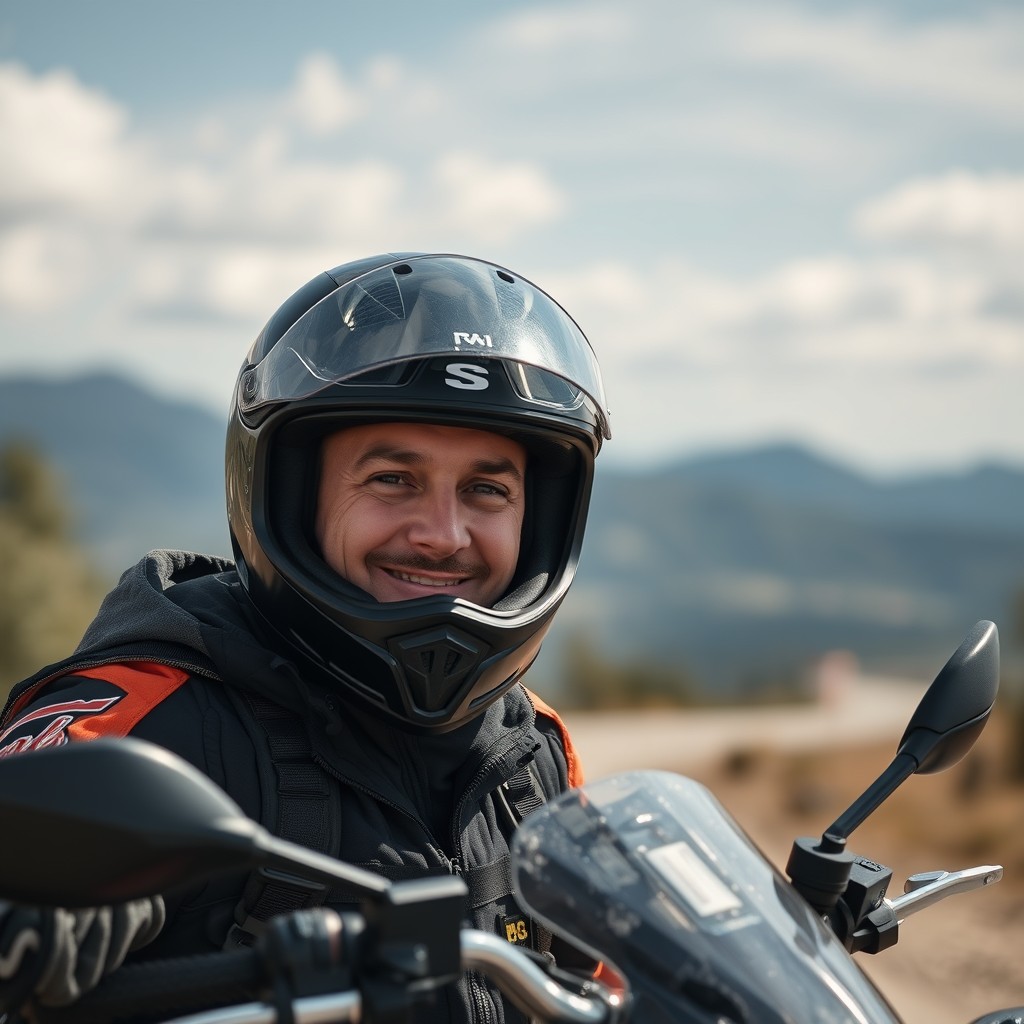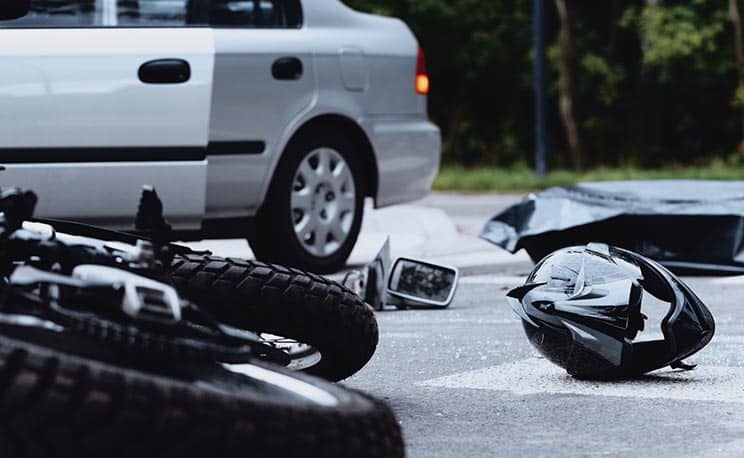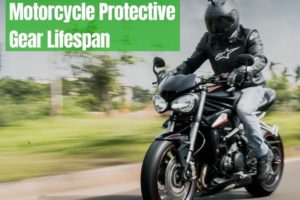Do you ride? Do you love it? Do the people around you think it’s a risky sport although you’ve never thought of it that way? Been there, done that.
We’ve put together a few fantastic tips for you that would actually work. There’s no magical potion or safety cloak, but you can always be careful and play your part to avoid encountering any such situation.
Many people believe that motorcycling is a very risky sport. It’s pretty normal. Many parents advise their children never to get on one’s back. Although it is true that motorcycles can be dangerous, there are a lot of people who just love being able to travel the scenic roads and appreciate panoramic views from the seat of a motorcycle.
However, even cautious motorcyclists can get involved in a crash in a matter of seconds, often by no fault of their own. You will reduce the risk of being involved in a harmful motorcycle crash by using proper safety protection and following careful driving techniques.
You cannot, however, regulate the actions of other drivers/riders. So, whether you’re an ardent motorcyclist or just a person who rides a bike, it’s essential to understand the causes that can lead to motorcycle crashes so you can avoid them better.
The 3 Primary Reasons For Motorcycle Accidents
Studies suggest that the leading cause of motorcycle crashes is the inability of motorists (road users of other vehicles) to identify, record or sense the presence of a motorcycle on the road. This inability to detect can refer to a bike that is in the front, in the rear, on the left, or even on the right side of a motor vehicle. Owing to the existence of motorcycles, they are much less safe than enclosed cars for a variety of reasons:
Poor visibility
Bikes are not as visible to other drivers as compared to enclosed cars. It can be easy to miss a motorcycle in your blind spot. A motorcyclist may frequently change the lanes quickly and navigate around the vehicles in a manner that may blind other drivers on the road for his bike’s presence. In this case, the quick navigation perk of motorbikes can actually backfire.
Lower stability
Motorcycles might not have the same balance capability as four-wheeled vehicles. If a motorcyclist runs into something on the road or gets stuck in a sudden storm, it becomes almost next to impossible to restore control.
Lack of protection
The motorcyclists have little to shield them from the weather. Motorists can be left helpless against traffic hazards or severe weather conditions. Even with the proper safety gear, including everything, from the best low profile motorcycle helmet to the best adventure motorcycle boots, motorcyclists are vulnerable to a variety of accidents when they’re out in the open rather than in the protective steel truck.
11 Tips To Protect Yourself In A Motorcycle Accident
1- Dress up
Cover yourself with long trousers and sleeves made of leather or other heavy, waterproof material, including a pair of adventure motorcycle gloves, safety glasses, summer riding pants, and waterproof motorcycle boots that can protect your feet even in rainy weather.
When it’s getting warmer, don’t hesitate to add layers or invest in heavier time gear such as heated motorcycle gloves, that are specifically designed for cold weather.
2- Wear a helmet and dress up that’s exclusive
Research shows that wearing a motorcycle helmet significantly decreases the occurrence of head injury in collisions. A DOT-certified full-face motorcycle helmet like HJC CL-17 and Shoei gt air helmet provides the best complete protection for your head and face.
3/4 motorcycle helmets and German motorcycle helmets are also DOT-approved but they lack facial protection. However, because they are built of robust and sturdy materials, they can effectively protect your head in the event of a crash and are a whole lot better to wear than riding without a helmet.
Don’t forget to look for stickers indicating that the manufacturer met the DOT’s minimum safety standards for a motorcycle helmet.
Dress bold colors and apply reflective features to both your clothes and your bike. Make use of your headlight, day or night. Drive through the portion of the driveway that represents you like the most accessible to the motorists.
3- Get a license for a motorcycle
Many states require bikers to receive a special motorcycle license to travel on the roads. Riders typically have to complete an awareness test and an ability test. Few states still mandate bikers to take a motorcycle proficiency test. Moving through those hoops pays off when it comes to safety. In most cases, more than one-fourth of the motorcyclists injured in accidents did not have a valid motorcycle license.
4- Get advanced motorcycle training
Motorcycle riders who’ve been self-taught or trained by friends account for more than ninety percent of bikers injured in motorcycle crashes. Having technical training in motorcycling could save your life.
5- Don’t drink while riding
About half of the injuries involving a single motorcycle are caused by crossing the speed limit or alcohol use. Not only is it against the rules to drink and ride a motorcycle, but it’s also incredibly dangerous.
6- Keep your motorcycle maintained
Making sure that the bike is in outstanding running condition is of its utmost importance to safety. While servicing is limited to the engine and the brakes only. You also have to check the wheels, headlights, turn signals, and rest of the components regularly.
Car drivers share a lane with other vehicles. Drivers prefer to search at cars in different routes and sometimes won’t consider a motorcyclist sharing a path with them. Motorists may make a fast lane change or move to one side, with severe repercussions for a motorcycle rider.
8- Know the level of ability
Know your talents, and ride them accordingly. Depending on the roadway is not the opportunity to check your competence or overestimate your ability.
9- Read more about the leading causes of motorcycle crashes
Awareness is a friend of yours. Learn more about the most common conditions that lead to motorcycle crashes. Think of how you can prevent those injuries, take note of when such circumstances can arise, and take particular caution when you are in such situations.
10- Avoid using hazardous roads
Road risks, like road debris or slippery surfaces, are riskier for bikes than for cars and can lead to serious injury. Any situations that are unsafe for bikers are not readily recognized. Spend some time learning about the various road dangers and know how to control your bike safely when it comes to these hazards.
11- Avoid Heavy Traffic Areas and Opening Doors
Of course, it’s not really easy to skip high-traffic places only because you’re riding your bike. But maybe you’re taking a weekend trip on a big holiday, and you know the path you’re planning to take would be busy. It could be a smarter option to intend to reach the track at a time when traffic is going to be lower or to follow another way. When you’re in an environment where there are a lot of parked vehicles by the driveway, in downtown areas, for instance, it’s better to stay abreast of your surroundings in such areas.
Conclusion
It is observed that riding a motorcycle carries a possible death risk thirty times higher than that for car drivers. Motorists are mindful of the dangers and can instinctively take the right precautions to defend themselves. Next time you ride your bike, keep your head up and have a watchful eye on the vehicles on the road. Keep safe, ride carefully, have fun!
A tip: Everybody else on the road is blind, you have got to save yourself. Have this mindset and you will always be extra careful, to begin with.

Ryan Thompson is a 35-year-old sport bike enthusiast known for his adventurous spirit. With years of weekend rides and exploring new roads, Ryan brings fresh insights and firsthand experience to ProtectiveGearz. His energetic approach and passion for the latest gear make him a trusted source for riders seeking up-to-date advice.

